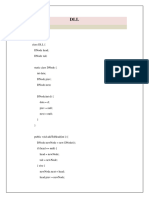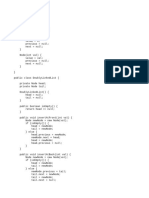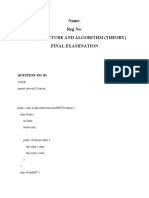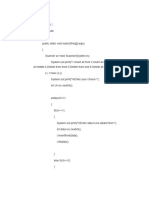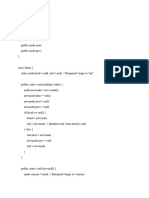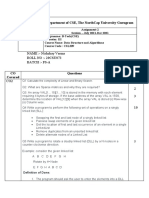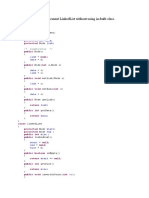0% found this document useful (0 votes)
26 views1 pageDoubly Linked List
The document contains a Java implementation of a doubly linked list with a Node class that includes methods for displaying the list in both forward and backward directions. The main class creates a linked list with nodes containing characters 'A' to 'E' and demonstrates the display methods. The linked list is properly linked with previous and next references for each node.
Uploaded by
mohammadjuma200306Copyright
© © All Rights Reserved
We take content rights seriously. If you suspect this is your content, claim it here.
Available Formats
Download as TXT, PDF, TXT or read online on Scribd
0% found this document useful (0 votes)
26 views1 pageDoubly Linked List
The document contains a Java implementation of a doubly linked list with a Node class that includes methods for displaying the list in both forward and backward directions. The main class creates a linked list with nodes containing characters 'A' to 'E' and demonstrates the display methods. The linked list is properly linked with previous and next references for each node.
Uploaded by
mohammadjuma200306Copyright
© © All Rights Reserved
We take content rights seriously. If you suspect this is your content, claim it here.
Available Formats
Download as TXT, PDF, TXT or read online on Scribd
/ 1


